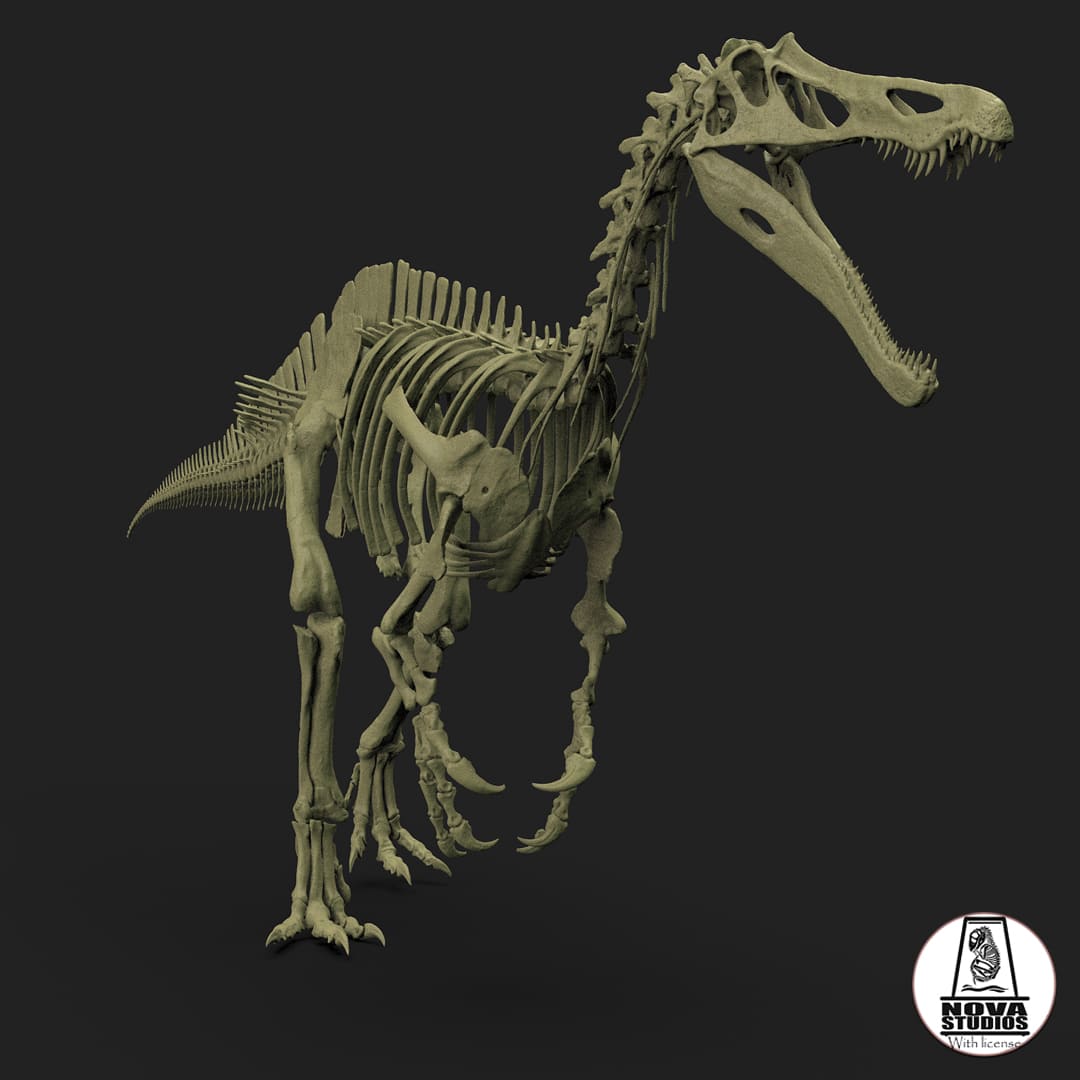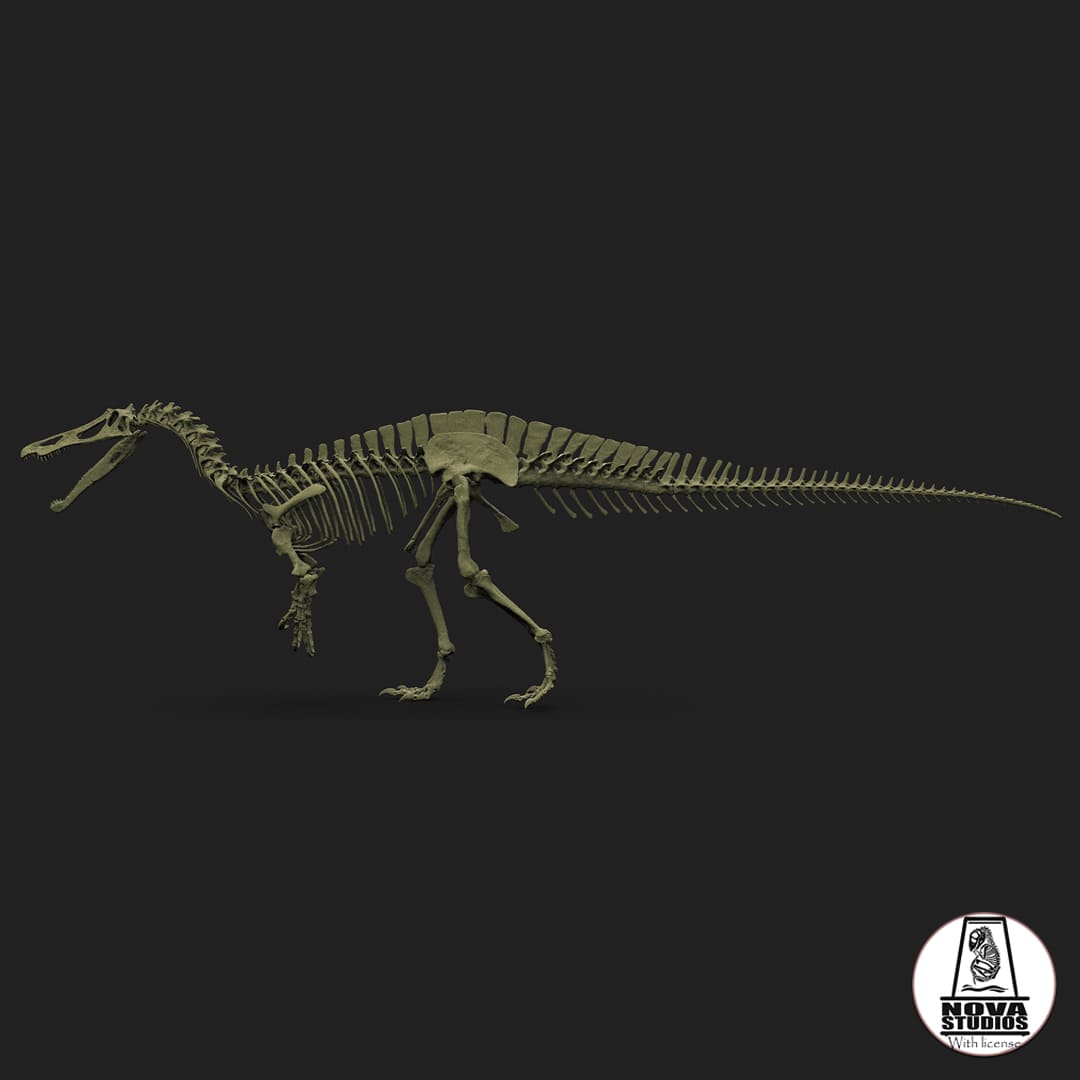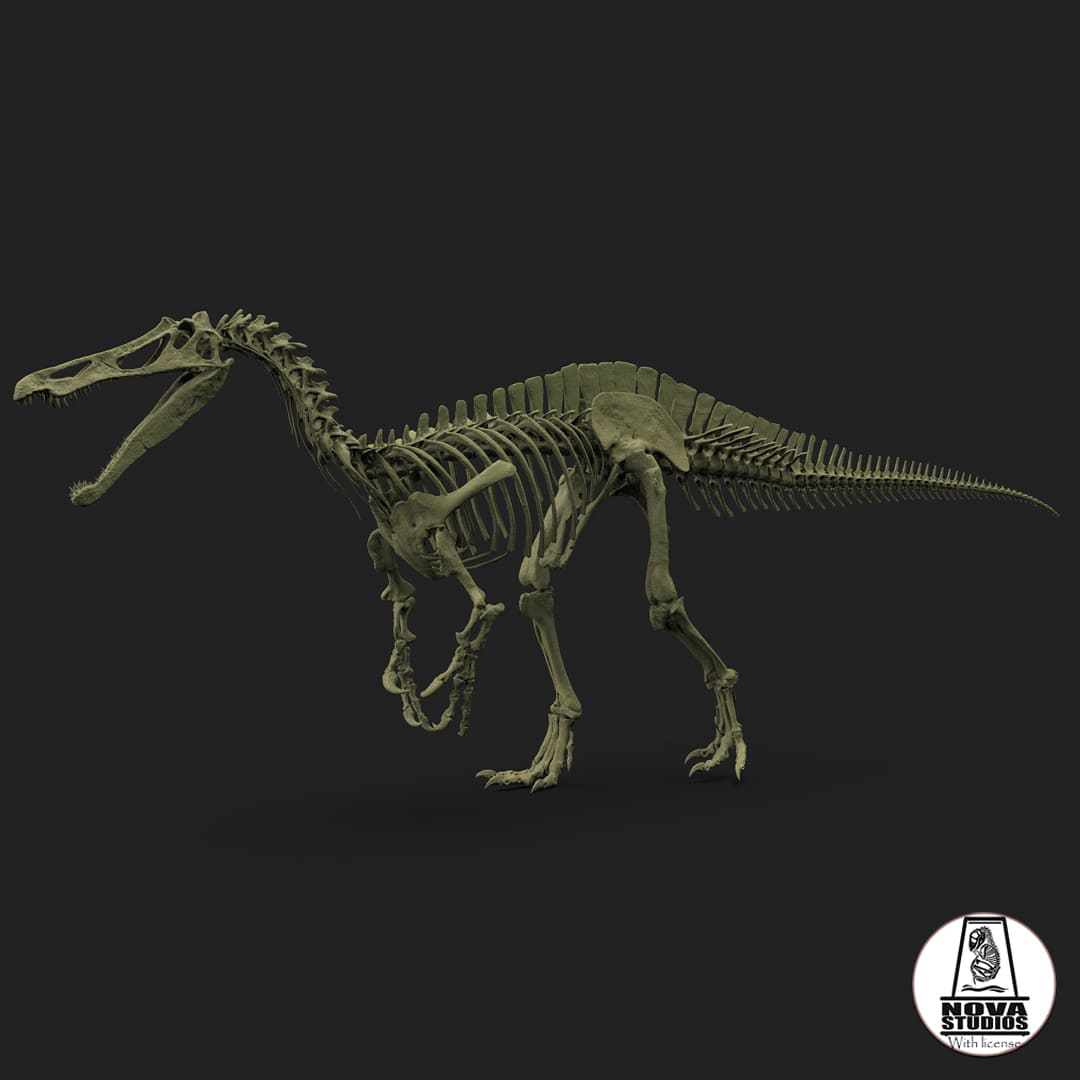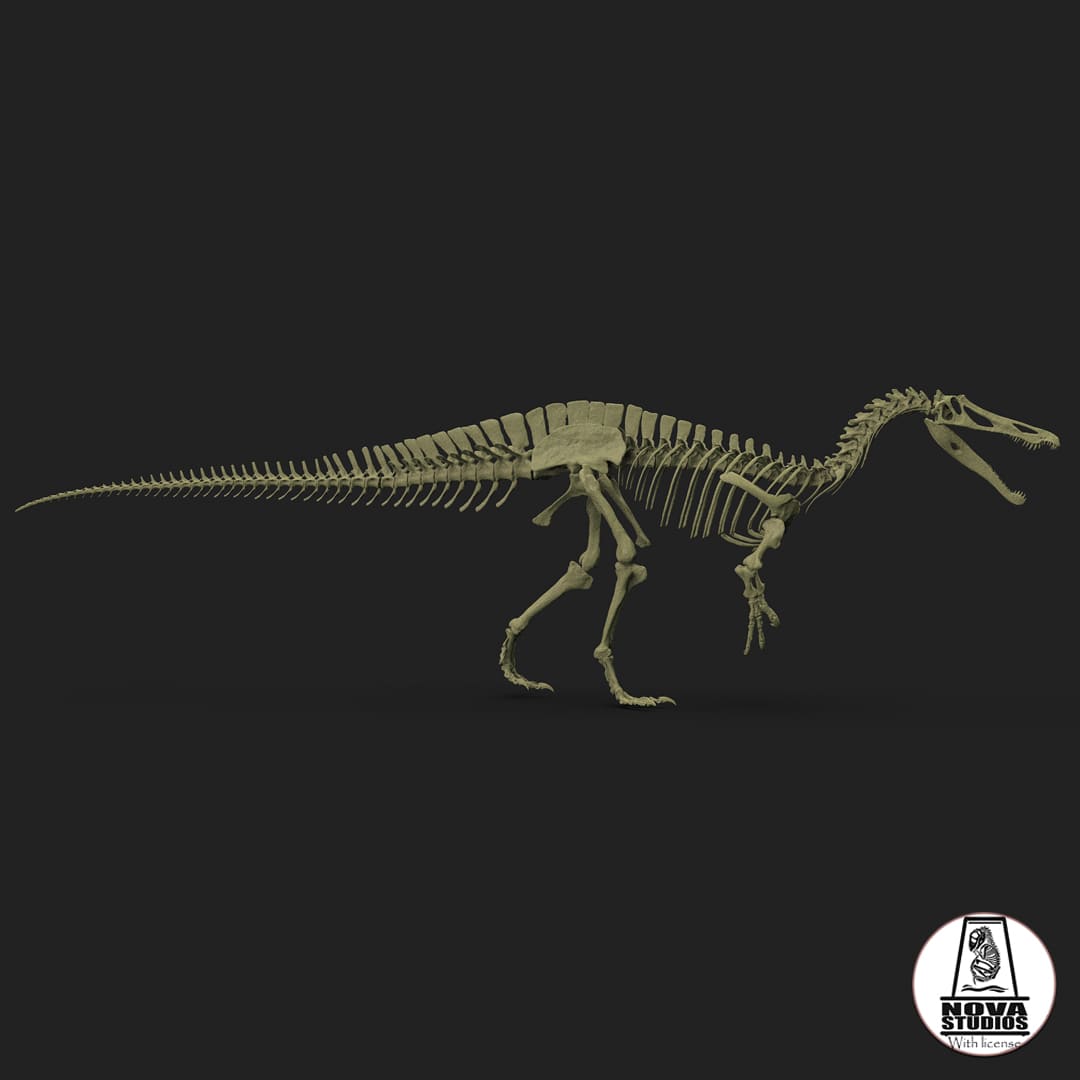




Suchomimus tenerensis
Do you want another scale?
Contact us and we will make it possible!
How will you receive your replica?
In the unprimed and primed variants, you will receive the complete replicas except for the large models, where you will receive an assembly kit.
In the hand-painted variant, the replicas will be delivered complete.
How does the painting service work?
We created a private chat for you where you will have direct communication with our painter , being able to choose your preferred color schemes and follow the hand painting process closely.
Pairs well with

Suchomimus tenerensis
If you have any questions, you are always welcome to contact us. We'll get back to you as soon as possible, within 24 hours on weekdays.
Shipping Information
Visit our shipping policy page to find all the information.
Customer Support
Give us a few details and we’ll offer the best solution. Connect by chat or email.
We are available 24/7.
FAQ’s
Visit our FAQ's page to find answers to common questions.
Contact Us
We'd love to hear from you. We are here to help. Visit our contact page to send us a message.
Product details
This dinosaur belongs to the spinosaurid family, known for its semi-aquatic adaptations and mainly piscivorous diets.
Description of Suchomimus tenerensis:
Suchomimus had an elongated body and a robust structure, reaching a length of approximately 12 meters and an estimated weight of between 2 and 5 tons. Its appearance resembled that of a gigantic crocodile due to its morphological adaptations for fishing.
Characteristics of its skeleton:
Skull:
The skull of Suchomimus was long and narrow, with a shape similar to that of modern crocodiles. It measured approximately 1.2 meters in length.
It had an elongated snout with narrow jaws filled with straight, conical teeth, ideal for catching fish. These teeth were not serrated, suggesting that their diet focused on slippery prey such as fish.
The snout had a "rosquette" at the tip of the upper jaw, an adaptation similar to that seen in modern gharials, possibly used to detect movements in water.
Spine:
The spinal column of Suchomimus included well-developed dorsal and caudal vertebrae. The caudal vertebrae were longer and more robust, giving it a strong, muscular tail that it could have used for swimming.
Along the spine, Suchomimus had elongated structures known as neural spines, although not as developed as in its close relative, Spinosaurus.
Dorsal fins:
Although not as prominent as in Spinosaurus, Suchomimus had elongated neural spines that suggested the presence of a sail or a series of fins along its back. These structures could have served for thermoregulation, display, or energy storage.
Extremities:
The forelimbs of Suchomimus were robust and elongated, with large curved claws on the fingers. These claws were particularly large on the first finger (thumb), indicating that they could have been used to hook and manipulate slippery prey such as fish.
The hind legs were powerful and adapted to support the weight of the body, suggesting that Suchomimus was a bipedal walker on land, although its adaptations also suggest a considerable capacity for swimming.
Shoulder and pelvic girdle:
The pectoral girdle (shoulders) and pelvic girdle (hip) were robust and well developed, providing a solid structure for locomotion both on land and in water.
The pelvis was wide, which helped distribute the weight of the body and support the powerful posterior train.
Fishing adaptations:
Suchomimus' adaptations for aquatic life and fishing are evident in its skull and teeth, as well as its musculature and skeletal structure. Its elongated, narrow skull, along with conical, non-serrated teeth, was ideal for catching fish. Its front limbs with large claws also suggest that it could have effectively caught prey in the water.
Approximate measurements of Suchomimus:
1:10 scale Assembly kit
Length 1150mm
Height 336mm
Width 143mm
Snout-tail length 1200 mm
Includes supports
Information about aftershocks
Collector's item ; Hyper-realistic replica, highly detailed and with a high degree of scientific precision.
Made to scale, prototyped in resin and with a scenic base in most of the models offered. If you like miniatures, both for collecting and for painting, we offer you a wide variety of scale replicas; All of them related to dinosaurs, extinct prehistoric fauna and current fauna.
So if you love dinosaurs and animals as much as we do, this is your favorite store to collect and paint them :)
We are authorized distributors of all the replicas and figures we offer. We use 3D printers with 8K - 14K resolution, and high-quality resins with additives to improve hardness and flexibility, thus offering replicas of impeccable quality.
Different scales will be used to make the replicas (depending on the size of the species), although we are open to making other suggested scales upon request as long as they fit in our printing trays, for which you will have to contact us via email and request the required size.
Replicas are supplied with the option of airbrush priming in dark grey. If you require another colour, please let us know which one you prefer in the box with special instructions for the seller. Without priming, we do not guarantee that the resin will accept paint.
We also offer the option of choosing a professionally painted replica, which is agreed upon throughout its development with the painter, through a private chat available.
Complete replica (one piece): We supply complete replicas in those models that are small, and models that are medium, large or not very bulky, will have the prerogative of being presented as a complete replica or assembly kit as the case may be.
Complete replicas will be supplied separately from their base.
Replica assembly kit: We supply replicas whose models are large, very large or bulky, only with this option.
The indicated replicas (generally composed of base, head, body and tail) will come prepared for the subsequent assembly that will be required by the client, by sanding, putty, adhesive or technique chosen by the client.
All replicas are thoroughly inspected before shipping and will be carefully packaged to prevent damage during transport.
Information about the models
The poses of the models aim to represent each character in the most scientifically viable way, thus revealing the life and customs of prehistoric and modern fauna.
Each character has its own personality and develops in different life scenarios; birth, adolescence and play, hunting, feeding, fighting, courtship, death and many other scenes from their daily life, always from the creative perspective of their designers.
Handmade
All orders are individually prepared on the cutter for subsequent prototyping, obtaining a resin part that will require post-processing by manual and ultrasonic cleaning, support removal, ultraviolet curing, labeling and packaging.

We are authorized distributors
We offer both our own physical replicas and those that have been modeled by many of the best 3D designers, in order to offer you the greatest possible variety.
Frequently Asked Questions
If you have any questions about products, orders or shipping, please read our FAQ page to learn more.
